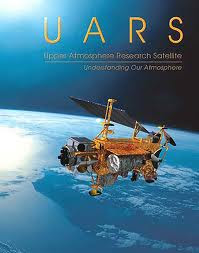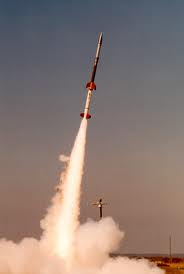 NASA officials have not yet determined whether the chunk of rock a woman was trying to sell in Lake Elsinore for $1.7 million is, in fact, genuine moon rock as she claimed.
NASA officials have not yet determined whether the chunk of rock a woman was trying to sell in Lake Elsinore for $1.7 million is, in fact, genuine moon rock as she claimed.
"It's possible this is a moon rock, but it has to be tested first," said Gail Robinson, deputy inspector general at NASA.
The woman, who has not been identified, was taken into custody on Thursday morning as part of an undercover sting conducted by NASA investigators and aided by local police. She was not arrested, Robinson said.
The investigation, which spanned several months, led to a covert meeting in a Lake Elsinore restaurant on Grape Street where undercover NASA officials agreed to buy the rock for $1.7 million, according to a report by the Riverside County Sheriff's Department.
When the woman produced the artifact, several Lake Elsinore police investigators and NASA agents swooped in.
Moon rocks are classified as "national treasures'' and federal law prohibits the sale of the artifacts.
Robinson said "it's not all that unusual" for someone to try to sell a piece of the moon.
Twice a year, the space agency's inspector general's office issues a report outlining what space trinkets were found on the black market. A recent report detailed the recovery of two rocket motors from the Apollo missions that put man on the moon; the motors were on sale on the Internet.
Astronauts who landed on the moon collected 2,415 samples of moon rocks weighing a total of 842 pounds. Most of these rocks were collected during the Apollo 15, 16 and 17 missions. In addition, three unmanned Soviet Luna spacecraft brought 0.66 pounds of lunar samples back to Earth, according to NASA's website.
Source; http://latimesblogs.latimes.com/lanow/2011/05/nasa-moon-rock-sell.html


 Defunct NASA Satellite To Crash To Earth This Week
Defunct NASA Satellite To Crash To Earth This Week A test flight of a NASA Terrier suborbital rocket motor will be conducted between 9 a.m. and 12:30 p.m. Thursday, Sept. 8 from the agency's Wallops Flight Facility in Virginia, officials announced.
A test flight of a NASA Terrier suborbital rocket motor will be conducted between 9 a.m. and 12:30 p.m. Thursday, Sept. 8 from the agency's Wallops Flight Facility in Virginia, officials announced. Thursday July 21, 2011 at 5:56 AM the Atlantis, along with the four astronauts touched down after its last 13 day mission to the International Space Station. A perfect landing and I guess a perfect end to the space travel as we know it. For 30 years we've watched astronauts take off and land and never once thought there may come a time such as this.
Thursday July 21, 2011 at 5:56 AM the Atlantis, along with the four astronauts touched down after its last 13 day mission to the International Space Station. A perfect landing and I guess a perfect end to the space travel as we know it. For 30 years we've watched astronauts take off and land and never once thought there may come a time such as this. NASA officials have not yet determined whether the chunk of rock a woman was trying to sell in Lake Elsinore for $1.7 million is, in fact, genuine moon rock as she claimed.
NASA officials have not yet determined whether the chunk of rock a woman was trying to sell in Lake Elsinore for $1.7 million is, in fact, genuine moon rock as she claimed. Teams from three southeastern colleges will try to launch rockets 10,000 feet in the air from Wallops Island and survive a water recovery.
Teams from three southeastern colleges will try to launch rockets 10,000 feet in the air from Wallops Island and survive a water recovery.  ORLANDO, Fla. -- NASA's Office of Education will kick off a new campaign on Thursday, April 28, focused on reaching out to America's military families and engaging them in agency activities to promote science, technology, engineering and mathematics (STEM) education.
ORLANDO, Fla. -- NASA's Office of Education will kick off a new campaign on Thursday, April 28, focused on reaching out to America's military families and engaging them in agency activities to promote science, technology, engineering and mathematics (STEM) education.